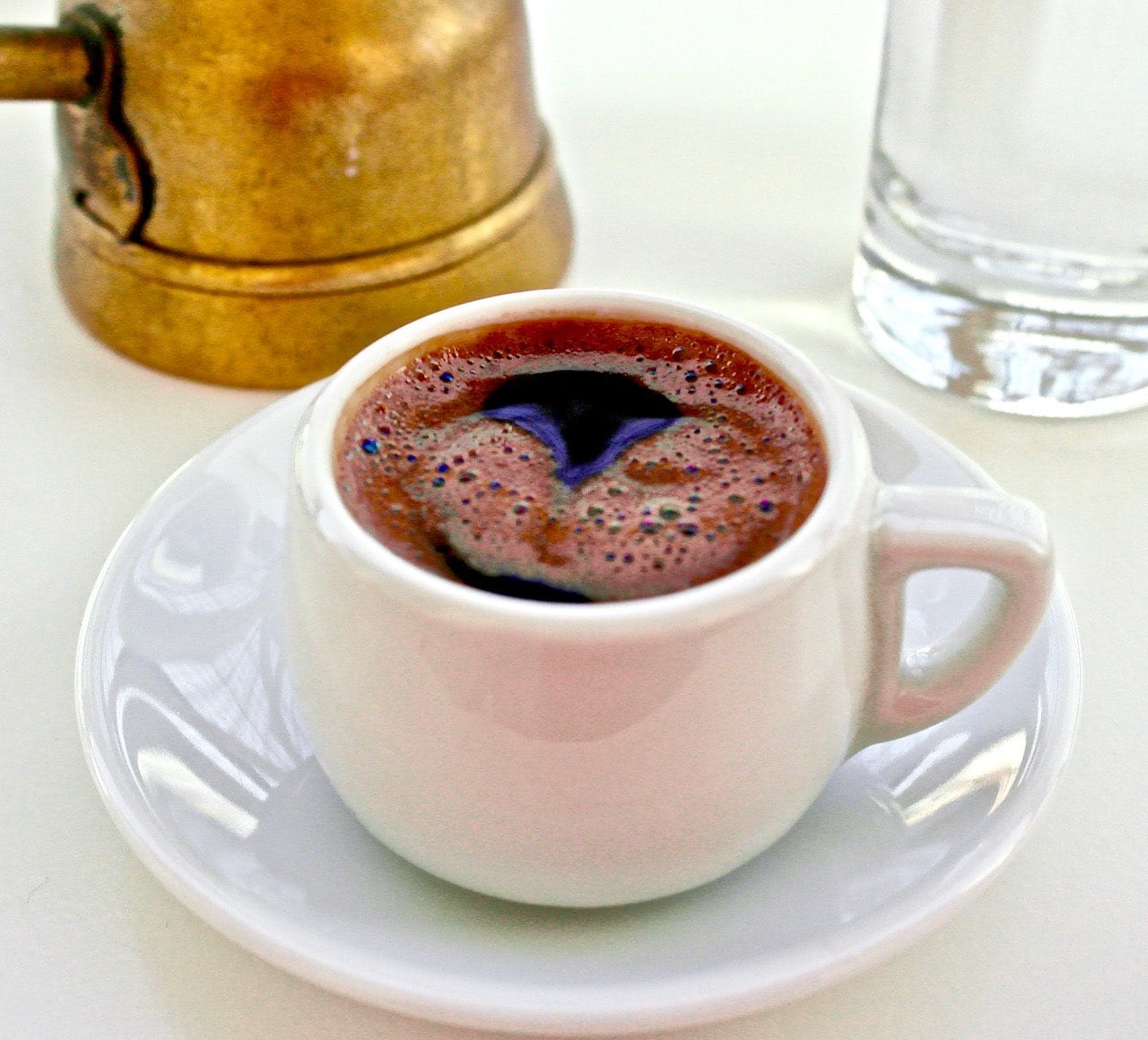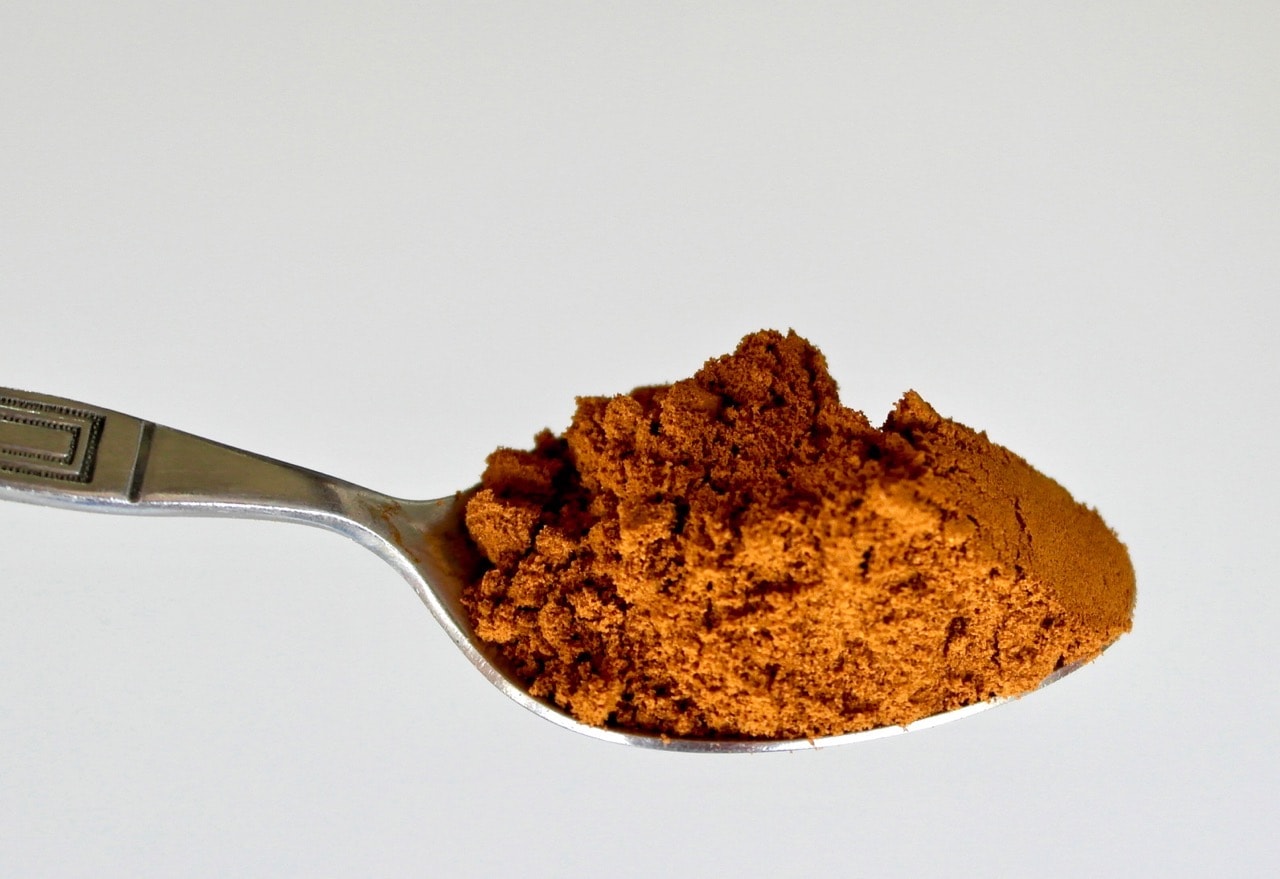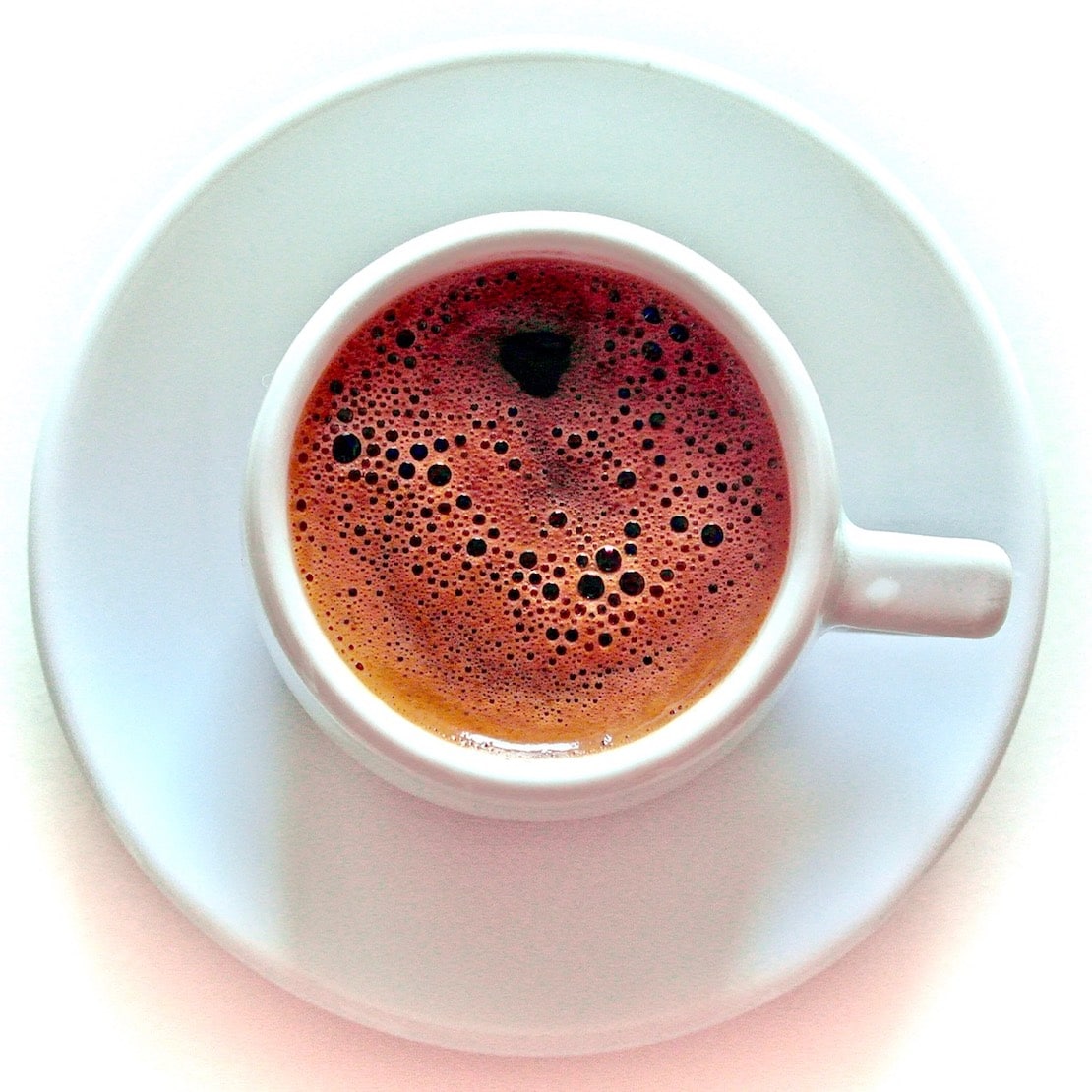
Sappiamo da un po’ che il caffè può fare bene e in particolare il caffè alla greca, come ci ha mostrato quel recente studio sugli anziani greci. Quindi come si fa?
Beh, prima di tutto il gusto è soggettivo e quando si tratta di caffè le variazioni sono illimitate. Lo stesso vale per il caffè greco, ovviamente non ci aggiungerai latte o sciroppi, ma il rapporto tra zucchero e caffè, la quantità di caffè, la durata della bollitura, se ha le bolle o no, sono tutti fattori che possono influenzare il gusto e la consistenza del caffè. Quindi in questo post vi mostrerò come faccio il caffè e vi presenterò i numerosi altri modi in cui può essere preparato.
Avrete bisogno
Avrete bisogno di alcune attrezzature per fare un buon caffè greco.
- Una fonte di gas. In Grecia la maggior parte delle persone aveva un piano di cottura a gas, oggi questi sono stati sostituiti da piani di cottura elettrici, che non mi piacciono molto, perché non riesco a vedere la fiamma. Dato che la maggior parte delle persone non ha più il piano di cottura a gas, qui si usa quello che voi chiamate gazaki, è un singolo bruciatore a gas da campeggio. Tradizionalmente questo tipo di caffè è fatto in quello che si chiama hovoli, che è fondamentalmente sabbia riscaldata.
- Prendi una piccola caffettiera chiamata briki.
- Tazzina di caffè espresso o tazza di caffè greco come quella nella foto
*Nota il caffè greco non ha spezie aggiunte come il cardamomo.

Che tipo di caffè dovresti usare?
Ora molte persone pensano che se macinano i loro chicchi di caffè preferiti in una polvere fine avranno il caffè alla greca. Questo non è il caso. Ricordo che quando ero il direttore di Food and Beverage per Starbucks in Grecia e stavamo lanciando il primo negozio in Grecia nel 2002, dovevamo servire caffè greco nel negozio. Apparentemente c’è una legge in Grecia che impone a tutti i negozi di caffè di servire caffè greco. Tuttavia, Starbucks serve solo le proprie miscele di caffè, così hanno macinato i loro chicchi in polvere e hanno fatto un caffè “greco”. Vi posso assicurare che sembrava un caffè greco, ma non aveva il sapore del caffè greco. Per fare questa miscela greca si usa una combinazione specifica di fagioli, con varietà specifiche di fagioli, tostati a temperature specifiche e usati in rapporti specifici. Se c’è un posto che macina/tosta il caffè in stile greco/turco/arabo vicino a te, allora, con tutti i mezzi, prendi il caffè da lì. Altrimenti, molti super mercati etnici lo vendono e puoi anche ordinare il caffè greco da Amazon, loro portano le 2 popolari marche greche Loumidis e Bravo.

Come bere il caffè greco
Mentre questo è un caffè piccolo, non deve essere confuso con l’espresso, che fondamentalmente si consuma velocemente in piedi. Questo caffè si consuma seduti lentamente. Per ottenere il sapore completo si dovrebbe sorseggiare il caffè lentamente. Ricordo le vecchie generazioni che prendevano forti sorsi di caffè; mentre questo può essere scortese, trovo che aumenta il godimento del caffè. Una volta che si inizia a degustare i primi fondi si è fatto. Non cercare di bere i fondi di caffè sul fondo della tazza.
In Grecia, tradizionalmente il caffè veniva consumato due volte al giorno: La mattina e il pomeriggio dopo il pisolino. Anche se il caffè sembra denso e nero non è estremamente alto in caffeina, in realtà è inferiore al normale caffè da filtro.
Diverse preparazioni di caffè greco
Come ho detto prima ci sono diversi modi di gustare il caffè (alcuni dicono che ci sono 45 modi diversi di preparare il caffè greco), quindi si può sempre ridurre lo zucchero o non aggiungerne affatto. Il modo in cui lo preparo io è considerato un po’ moderato o forte. Ecco alcuni dei modi in cui può essere consumato:
- Plain pronunciato Sketos: Only coffee and no sugar
- Strong pronounced Varis: 2-3 teaspoons of coffee with 1 teaspoon sugar
- Light pronounced Elafris: ½-1 teaspoon of coffee + 1 teaspoon sugar
- Sweet pronounced Glykos: 1 teaspoon coffee +2 teaspoons sugar
- Strong-Sweet pronounced Variglykos: 3 teaspoons coffee +3 teaspoons sugar
- Yes and No pronounced Ne ke Ohi: 1 teaspoon coffee + ½ teaspoon sugar
Greek Coffee

Print Recipe Pin Recipe
Ingredients
Special Equipment
- Gas Source see above
- Small coffee pot called a briki.
- Espresso cup or Greek coffee cup
Instructions
-
Measure out a full coffee cup of water (about 2 1/2 -3 ounces or 75-90 mls) and pour into the briki. If you are making more than one coffee make sure your briki is big enough, you will need space to let the coffee bubble and foam.
-
Add 2 teaspoons of coffee and 2 teaspoons of sugar for every 1 coffee cup and stir. This ratio is considered a somewhat strong coffee.
-
Place the briki on the gas and turn on so that it is on low heat.
-
Very slowly let the coffee heat up, (keep the flame very-very low). Do not leave the coffee unattended.
-
You will slowly see the surface start to tremble (I describe it like a volcano waiting to explode). Once it starts foaming, lift it slightly from the heat until the foam/bubbles settle and then put it on the fire again and let it start foaming and puffing up. Then remove. This step is important to get a good coffee. You don’t want to let it over-boil otherwise it will not have that creamy/foam on top, but you don’t want it under-boiled because then you may taste the grounds in the coffee.
-
Serve in the coffee cup. If you are making more then one, separate the foam in each coffee cup.
-
Serve the cup on a small saucer with a glass of cold water.